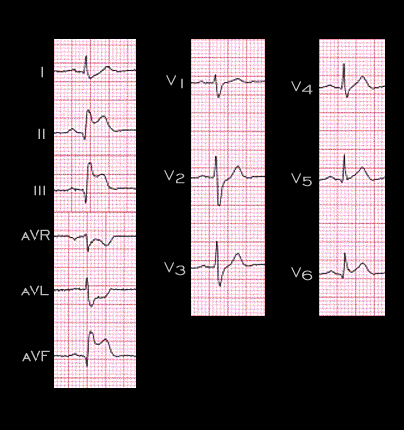
The ST segment elevation in leads II, III, aVF and the ST segment depression in aVL indicate that the ST segment vector is directed inferiorly. The greater ST elevation in lead III than in lead II, coupled with the slight ST depression in lead I indicates that it is also directed slightly to the right with an axis of about +100 degrees. This suggests that the culprit lesion is within the right coronary artery rather than the circumflex coronary artery. Ir is for this reason that involvement of the right ventricle should also be considered. The ST elevation in leads V5 and V6 does not contribute to the direction of the frontal plane vector but raises the possibility of lateral wall involvement and suggests that this region was also supplied by the right coronary artery or that there was an additional significant lesion in the circumflex coronary artery.
